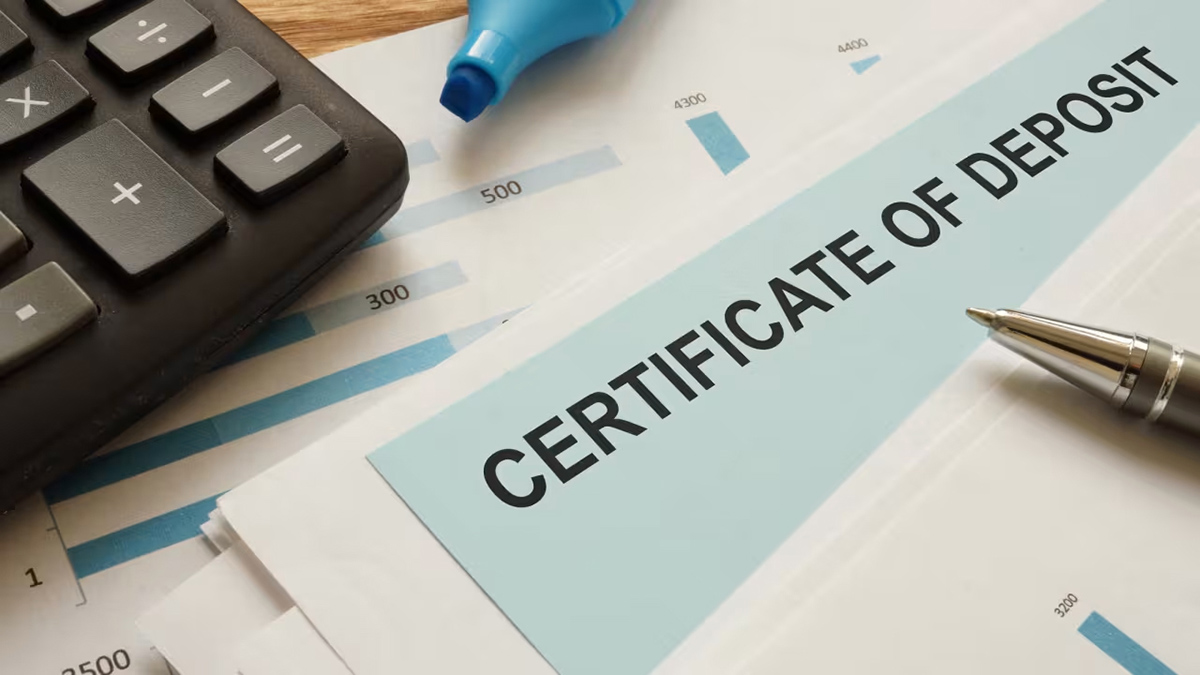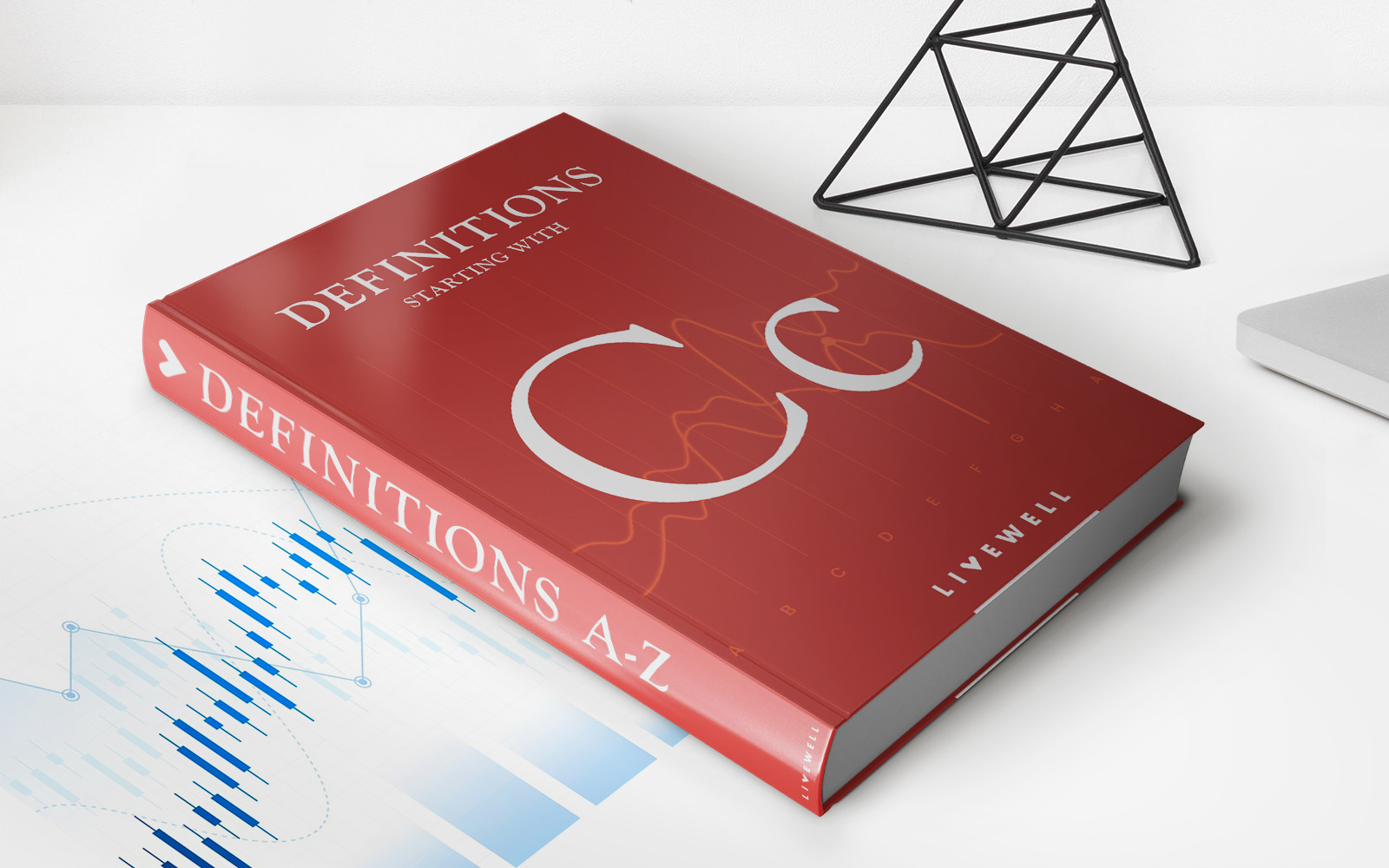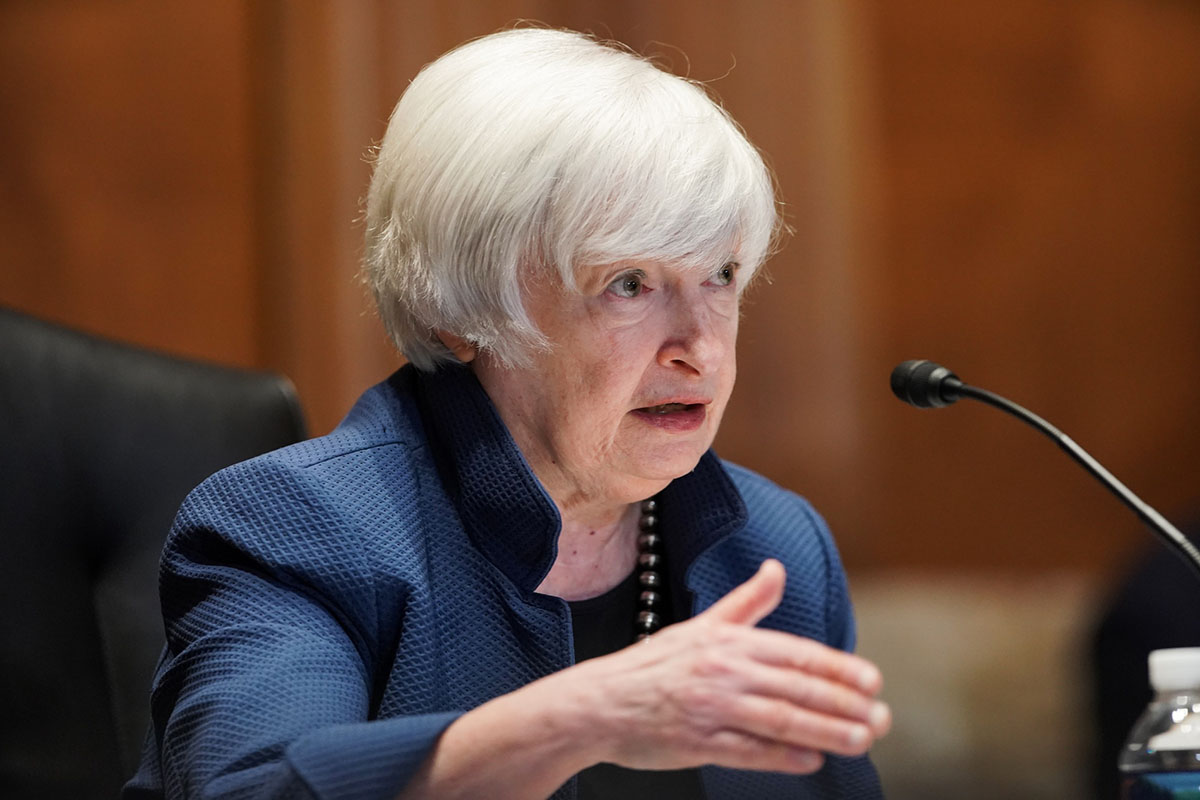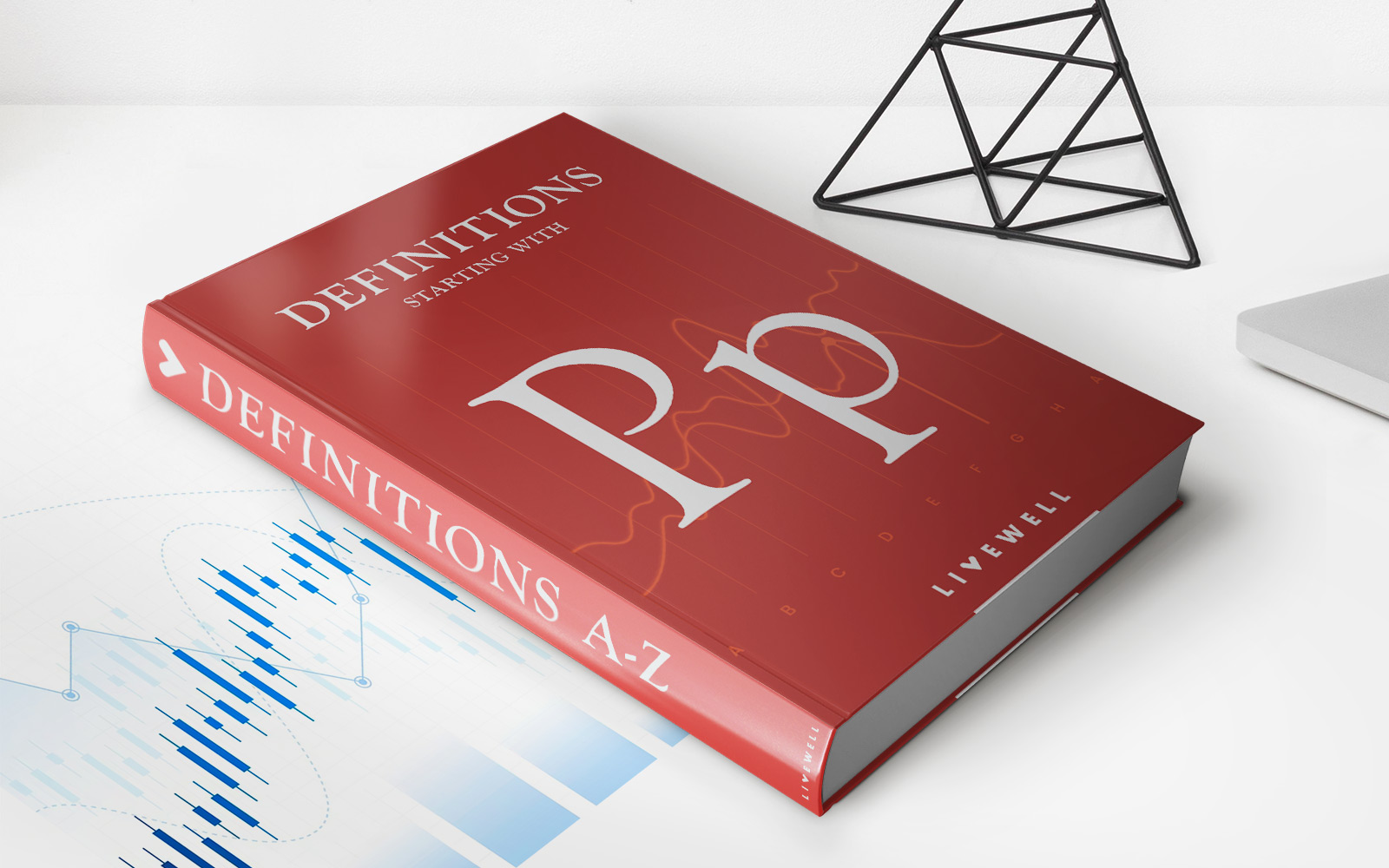

Finance
How Many Certificates Of Deposit Do You Own
Modified: December 29, 2023
Discover the importance of diversifying your investment portfolio with certificates of deposit. Get expert advice on managing your finances and maximizing returns in the finance industry.
(Many of the links in this article redirect to a specific reviewed product. Your purchase of these products through affiliate links helps to generate commission for LiveWell, at no extra cost. Learn more)
Table of Contents
Introduction
When it comes to managing your finances, it’s important to explore various investment options to ensure a diversified portfolio. One such option is a Certificate of Deposit (CD), a popular choice for those looking for a low-risk investment with a fixed interest rate.
A Certificate of Deposit is a time deposit offered by banks and financial institutions. It allows you to deposit a certain amount of money for a specified period of time, typically ranging from a few months to several years. In return, you earn interest on your investment, which is often higher than what you would earn in a regular savings account.
As an investor, it’s crucial to assess the number of CDs you own and understand how it impacts your financial goals. Should you spread your investment across multiple CDs, or is it better to concentrate your funds in a single CD? In this article, we’ll explore the factors to consider when determining how many certificates of deposit you should own.
Understanding Certificates of Deposit (CDs)
Certificates of Deposit, commonly referred to as CDs, are financial instruments that allow individuals to invest their money for a set period of time, known as the term. CDs are offered by banks and credit unions and are considered to be a low-risk investment option.
When you open a CD, you deposit a specific amount of money with the financial institution, and in return, they agree to pay you a fixed interest rate for the duration of the term. The interest rate on a CD is typically higher than what you would earn in a regular savings account since you agree to keep your money locked in the CD for the specified period.
The term length of a CD can range from a few months to several years, with longer-term CDs generally offering higher interest rates. However, it’s important to note that CDs have a fixed maturity date, meaning you cannot withdraw your funds before the term ends without incurring penalties.
CDs provide a sense of security as they are insured by the Federal Deposit Insurance Corporation (FDIC) for up to $250,000 per depositor, per institution. This insurance ensures that even if the bank or credit union fails, your initial deposit will be protected.
CDs offer a predictable return on investment, making them an attractive option for individuals looking for stability and consistent earnings. However, it’s essential to weigh the benefits and drawbacks of CDs to determine if they align with your financial goals and risk tolerance.
Evaluating Your CD Portfolio
When it comes to managing your CD portfolio, it’s crucial to regularly evaluate your investments to ensure they align with your financial objectives. Here are a few key factors to consider:
- Interest Rates: Take a close look at the interest rates you are earning on your CDs. Are they competitive compared to current market rates? If not, it may be worth exploring other institutions or negotiating for a better rate with your current bank.
- Term Lengths: Assess the maturity dates of your CDs. Do you have a balance between short-term and long-term CDs? Having a mix of different term lengths can help you maintain liquidity while also maximizing your returns.
- Penalties: Familiarize yourself with the penalties associated with early withdrawals. In certain situations, you may need to access your funds before the CD’s maturity date. Understanding the penalties can help you make informed decisions.
- FDIC Coverage: Confirm that your CD investments are within the FDIC coverage limit. If you have a significant amount of money invested in CDs, it might be necessary to spread your funds across multiple institutions to ensure full protection.
- Portfolio Balance: Evaluate the overall balance of your CD portfolio in relation to your other investments. CDs are generally considered to be a lower-risk investment option, so make sure they are complemented by higher-yielding and more diversified assets to achieve a well-rounded portfolio.
By regularly evaluating your CD portfolio, you can make informed decisions to optimize your returns and manage your risk effectively. This assessment will help you determine if any adjustments need to be made to align with your changing financial goals and market conditions.
Assessing the Risk of CD Ownership
One of the main reasons why investors are attracted to Certificates of Deposit (CDs) is their low-risk nature. CDs offer a secure investment option with a predetermined interest rate, making them an appealing choice for those who prioritize capital preservation. However, it’s still important to assess the risks associated with CD ownership.
One risk to consider is the risk of inflation. While CDs provide a fixed interest rate, the rate may not keep pace with inflation over time. This means that the purchasing power of your money may be eroded, resulting in a lower real return on your investment.
Another risk is the opportunity cost of tying up your funds in a CD. Because CDs have a fixed term, you may miss out on other investment opportunities that could potentially offer higher returns. It’s essential to evaluate the potential returns of alternative investments and weigh them against the security and stability offered by CDs.
Liquidity risk is also a factor to consider. Once you deposit your money into a CD, it becomes less accessible during the term. If unexpected expenses arise, or if interest rates increase significantly, you may have limited options for accessing your funds without incurring penalties.
Additionally, there is a possibility of default risk, although it is minimal for CDs issued by reputable financial institutions. However, it’s important to ensure that the bank or credit union offering the CD is FDIC-insured to mitigate this risk. FDIC insurance provides coverage of up to $250,000 per depositor, per institution, in the event of a bank failure.
Ultimately, the risk level associated with CD ownership is relatively low compared to other investment options. However, it’s crucial to understand and accept the risks involved before allocating a significant portion of your portfolio to CDs. It is wise to balance your investment strategy by diversifying across different asset classes and considering your overall risk tolerance.
Diversifying Your CD Holdings
While Certificates of Deposit (CDs) are considered low-risk investments, it’s still crucial to diversify your CD holdings to mitigate potential risks and maximize your returns. Diversification involves spreading your investments across different types of CDs and financial institutions. Here’s why diversifying your CD holdings is important:
- Risk Reduction: By investing in CDs from multiple institutions, you reduce the risk of any single bank defaulting. The Federal Deposit Insurance Corporation (FDIC) insures CDs up to $250,000 per depositor, per institution, so spreading your funds across different banks ensures that your entire investment is protected.
- Term Length: Diversifying the term lengths of your CDs allows you to benefit from different interest rate environments. Short-term CDs can provide more liquidity, while long-term CDs may offer higher interest rates. Balancing these different terms can help you optimize your returns while maintaining flexibility.
- Interest Rate Variability: Interest rates can fluctuate over time, affecting the yields of different CDs. By diversifying your CD holdings, you can take advantage of varying interest rate cycles. This strategy helps reduce the impact of unfavorable rate changes on your overall CD portfolio.
- Access to Opportunities: Holding CDs from multiple institutions opens up more opportunities to take advantage of promotional offers and competitive rates. Banks often offer special deals to attract new customers, so diversifying your holdings allows you to leverage these opportunities.
When diversifying your CD holdings, consider your investment goals, risk tolerance, and liquidity needs. You can also explore different types of CDs, such as traditional fixed-rate CDs or variable-rate CDs, to further diversify your portfolio.
Keep in mind that diversification should not be limited to CDs alone. It’s important to incorporate other investment vehicles into your portfolio, such as stocks, bonds, and mutual funds, to achieve a well-rounded and diversified investment strategy.
By diversifying your CD holdings, you can reduce risk, take advantage of varying interest rate environments, and maximize your returns while maintaining the security and stability offered by CDs.
Rebalancing Your CD Portfolio
Just like any other investment portfolio, it’s important to periodically review and rebalance your Certificates of Deposit (CD) holdings. Rebalancing involves adjusting your investments to maintain the desired asset allocation and align with your financial goals. Here’s why rebalancing your CD portfolio is crucial:
- Portfolio Alignment: Over time, the allocation of your CD investments may shift due to changes in interest rates, maturity dates, or your financial objectives. Rebalancing allows you to realign your CD portfolio to match your desired asset allocation and risk profile.
- Managing Maturity Dates: Rebalancing helps you manage the maturity dates of your CDs. As each CD reaches its maturity date, you can decide whether to reinvest the funds into a new CD or allocate them to other investment options. This allows you to maintain control over your funds and explore new opportunities.
- Interest Rate Optimization: Rebalancing also allows you to take advantage of changing interest rate environments. If rates have increased since you initially invested in your CDs, you can consider reinvesting your funds in new CDs with higher rates. On the other hand, if rates have decreased, you may choose to reinvest in shorter-term CDs to have more flexibility and capture potential rate increases in the future.
- Goal Alignment: Your financial goals may change over time, and rebalancing your CD portfolio helps ensure that your investments continue to align with your objectives. It allows you to reassess your risk tolerance, liquidity needs, and investment time horizon, making adjustments as necessary.
When rebalancing your CD portfolio, consider consulting with a financial advisor to evaluate your overall investment strategy. They can provide guidance on optimal asset allocation, assess market conditions, and help you make informed decisions.
Remember that the frequency of rebalancing depends on your individual circumstances and market conditions. It’s generally recommended to review and rebalance your CD portfolio at least once a year or when significant changes occur that may impact your financial goals.
By regularly rebalancing your CD portfolio, you can ensure that your investments remain in line with your objectives, optimize your returns, and adapt to changing market conditions.
The Benefits and Drawbacks of Owning Multiple CDs
Owning multiple Certificates of Deposit (CDs) can offer several benefits, but it’s important to also consider the drawbacks. Here’s a look at the advantages and disadvantages of owning multiple CDs:
- Benefits:
- Increased Portfolio Diversification: Holding multiple CDs allows you to diversify your investment portfolio. By spreading your funds across different terms and financial institutions, you reduce the risk associated with having all your funds in a single CD.
- Flexibility in Liquidity: Having multiple CDs with different maturity dates provides you with more flexibility in managing your liquidity needs. You can stagger the maturity dates to align with anticipated expenses or to have access to funds in case of emergencies.
- Opportunity for Higher Returns: By investing in CDs with different interest rates and terms, you have the potential to earn higher returns. This is especially beneficial if you take advantage of rising interest rates by continuously reinvesting your funds in CDs with higher rates.
- Customized Risk Management: Owning multiple CDs allows you to tailor your risk exposure. You can allocate your funds across different CD types, such as traditional fixed-rate CDs and variable-rate CDs, to balance stability and potential for growth.
- Drawbacks:
- Divided Interest Income: When you own multiple CDs, your interest income is divided among them. This means that the potential earnings from an individual CD may be lower compared to a single large CD. However, this can be offset by the benefits of diversification and flexibility.
- Tracking and Recordkeeping: Managing multiple CDs requires diligent tracking and recordkeeping to ensure you keep track of maturity dates, interest rates, and penalties. It’s important to stay organized and maintain clear documentation to avoid any confusion or missed opportunities.
- Potential Penalties: With multiple CDs, there is a higher chance of incurring penalties if you need to access your funds before the maturity date. Carefully consider your liquidity needs and choose CDs with terms that align with your financial goals to minimize the risk of penalties.
- Complexity in Decision-making: Juggling multiple CDs may require careful decision-making to optimize your returns and manage your risk effectively. It’s important to stay informed about market conditions, interest rate trends, and suitable reinvestment options to make informed choices.
Consider your financial goals, risk tolerance, and investment strategy when deciding whether to own multiple CDs. Assess the benefits and drawbacks mentioned above to make an informed decision that best suits your individual circumstances.
Factors to Consider When Choosing the Number of CDs to Own
Determining the number of Certificates of Deposit (CDs) to own depends on your financial goals, risk tolerance, and investment strategy. Here are some factors to consider when deciding how many CDs to include in your portfolio:
- Investment Objectives: Assess your investment objectives. Are you seeking capital preservation, income generation, or a combination of both? Consider how CDs fit into your overall investment strategy and how they align with your goals.
- Risk Tolerance: Determine your risk tolerance. CDs are generally considered low-risk investments, but it’s important to assess your comfort level with potential fluctuations in returns and liquidity.
- Liquidity Needs: Evaluate your liquidity needs. Consider your short-term and long-term financial obligations. If you anticipate the need for quick access to funds, it may be wise to allocate fewer funds to CDs or choose shorter-term CDs.
- Interest Rate Outlook: Stay informed about interest rate trends and monetary policy. If interest rates are expected to rise, you may consider investing in shorter-term CDs to take advantage of future rate increases. Conversely, if rates are expected to decrease, longer-term CDs may offer more favorable yields.
- FDIC Insurance Limits: Understand the FDIC insurance limits. Ensure that your total investment in CDs with a single institution does not exceed the insurance threshold of $250,000 per depositor. Spreading your funds across multiple institutions can provide additional coverage.
- Portfolio Diversification: Consider the overall diversification of your investment portfolio. CDs can be one component of a diversified portfolio, alongside stocks, bonds, real estate, and other assets. Evaluate how CDs fit into your diversification strategy.
- Reinvestment Opportunities: Assess the potential for reinvesting your CD funds. If you expect interest rates to rise or if you anticipate better investment opportunities in the near future, you may opt for shorter-term CDs to have more flexibility in reinvesting your funds.
It’s important to strike a balance between risk, return, and liquidity when determining the number of CDs to own. Consider consulting with a financial advisor who can provide personalized guidance based on your unique financial situation and goals.
By thoroughly evaluating these factors, you can make an informed decision on the optimal number of CDs in your portfolio, ensuring it aligns with your investment objectives and provides a suitable level of risk and potential return.
Conclusion
Certificates of Deposit (CDs) offer individuals a low-risk investment option with fixed interest rates, making them an attractive choice for those looking to earn a predictable return on their funds. When it comes to owning multiple CDs, there are several factors to consider.
First, it’s important to understand the benefits and drawbacks of owning multiple CDs. While diversification and flexibility are key advantages, there are challenges such as divided interest income and the need for careful tracking and recordkeeping. By assessing these factors, you can determine if owning multiple CDs aligns with your investment goals and risk tolerance.
Additionally, evaluating your CD portfolio, assessing the risk of CD ownership, diversifying your CD holdings, and rebalancing your CD portfolio are all crucial steps to optimize your returns and manage risk effectively.
Ultimately, the number of CDs to own depends on various factors such as investment objectives, risk tolerance, liquidity needs, interest rate outlook, and portfolio diversification. It’s important to carefully consider these factors and consult with a financial advisor to make informed decisions.
By striking the right balance between risk, return, and liquidity, and regularly reviewing and adjusting your CD portfolio, you can maximize the benefits of owning multiple CDs and work towards achieving your long-term financial goals.














